You are using an out of date browser. It may not display this or other websites correctly.
You should upgrade or use an alternative browser.
You should upgrade or use an alternative browser.
Kazumi Okuda''s Other Invention
- Thread starter Superidealist
- Start date
- Status
- Not open for further replies. Please create a new topic or request for this thread to be opened.
- Joined
- Aug 15, 2000
- Messages
- 19,235
Thanks heaps Fred.
Owe you a meal. Vegas 2005?
To establish the cut grading method could you attempt to measure the distance from the circulite, its diameter, and the width of the light source please?
From that we can establish the lighting angle (by asking someone who does trig
 )
)
The light metter method backed up with human interpretation of patterns is very simple but effective
Owe you a meal. Vegas 2005?
To establish the cut grading method could you attempt to measure the distance from the circulite, its diameter, and the width of the light source please?
From that we can establish the lighting angle (by asking someone who does trig

The light metter method backed up with human interpretation of patterns is very simple but effective
- Joined
- Jul 21, 2004
- Messages
- 9,159
Fleimstaler
Rough_Rock
- Joined
- Jan 2, 2005
- Messages
- 17
Hi Riley
I saw this post today.
On the 28th April 1980 Mr. Okuda wrote me a letter telling me about the loupe with the red ring, and attached a sample to it. He suggested to use Nikon or Zeiss loupe that was easly available on the market. The reason for choosing these loupes was that both had 50 l/mm resolution.
From this indication I developed my own instrument and the photos shown by you on this thread were taken with it.
I developed it starting from the Okuda loupe without knowing anything about firescope or ideal scope. I always thought that I was the only one to work on the Okuda idea of the coloured light reflections, then at the beginning of August 2001, I was invited in America for a minicrongress on diamond cut grading and I saw for the first time the firescope. I was very surprised because I new nothing of it, but I also realised that my instrument was far more advance,d it was only for my use as I thought that nobody could be interested in it. Then when I came back fron USA I registered as a member of diamond talk and got all the news about.
I see on tis thread that Gary pubblished the letter that I got from Mr. Okuda in April 1980 without my name and address but this letter proves that Okuda was already working with the red light before that date.
The green light in the microscope had a two fold purpose:
A. Read the numbers and letter printed on the table of a brilliant cut diamond''s table (he had a patent on it)
B. Grade the cut of a brilliant cut diamond
There is a precise reason for using green light in the microscope and red light in the other devices.
As many graders have different eyesight, and this may lead, as a consequence, to discrapancies in grading, Okuda had worked out a mathematical model to overcome this problem and the clarity grading on his microscope is based on this.
I first met Mr. Okuda in 1978 and therefore I can confirm that his method of green light reflection for cut grading dates back to that time.
Thanks and regards.
Fleimstaler
I saw this post today.
On the 28th April 1980 Mr. Okuda wrote me a letter telling me about the loupe with the red ring, and attached a sample to it. He suggested to use Nikon or Zeiss loupe that was easly available on the market. The reason for choosing these loupes was that both had 50 l/mm resolution.
From this indication I developed my own instrument and the photos shown by you on this thread were taken with it.
I developed it starting from the Okuda loupe without knowing anything about firescope or ideal scope. I always thought that I was the only one to work on the Okuda idea of the coloured light reflections, then at the beginning of August 2001, I was invited in America for a minicrongress on diamond cut grading and I saw for the first time the firescope. I was very surprised because I new nothing of it, but I also realised that my instrument was far more advance,d it was only for my use as I thought that nobody could be interested in it. Then when I came back fron USA I registered as a member of diamond talk and got all the news about.
I see on tis thread that Gary pubblished the letter that I got from Mr. Okuda in April 1980 without my name and address but this letter proves that Okuda was already working with the red light before that date.
The green light in the microscope had a two fold purpose:
A. Read the numbers and letter printed on the table of a brilliant cut diamond''s table (he had a patent on it)
B. Grade the cut of a brilliant cut diamond
There is a precise reason for using green light in the microscope and red light in the other devices.
As many graders have different eyesight, and this may lead, as a consequence, to discrapancies in grading, Okuda had worked out a mathematical model to overcome this problem and the clarity grading on his microscope is based on this.
I first met Mr. Okuda in 1978 and therefore I can confirm that his method of green light reflection for cut grading dates back to that time.
Thanks and regards.
Fleimstaler
- Joined
- Aug 15, 2000
- Messages
- 19,235
Superidealist
Brilliant_Rock
- Joined
- Sep 10, 2003
- Messages
- 655
As was mentioned above, modified red-ringed Nikon loupes were being sold by Rubin & Son in the early 1970''s. Similar loupes may have been used in Russia in the 1960''s, though I haven''t been able to definitely confirm this. It would be interesting to know exactly where these techniques originated.Date: 1/5/2005
Author: Fleimstaler
On the 28th April 1980 Mr. Okuda wrote me a letter telling me about the loupe with the red ring, and attached a sample to it. He suggested to use Nikon or Zeiss loupe that was easly available on the market. The reason for choosing these loupes was that both had 50 l/mm resolution.
...
I first met Mr. Okuda in 1978 and therefore I can confirm that his method of green light reflection for cut grading dates back to that time.
Fleimstaler
Rough_Rock
- Joined
- Jan 2, 2005
- Messages
- 17
Superidealist
Brilliant_Rock
- Joined
- Sep 10, 2003
- Messages
- 655
one of the main features of the green light is to align the table, the table should be completely green which means that the table is square to the light.Date: 8/17/2004 12:00:10 AM
Author: Superidealist
On page five of the manual, it says that the green light is to be turned on during proportion grading.
the light is then removed and a diamond brillancey meter is then inserted-turn on the florecence light turn on the meter and it will read out a digital number between 0 and 100% which gives you an indication of the light returning through the table the higher the number the greater the brillancey. it''s an amazing microscope. If you have any questions I''ll be more than happy to help

jim
- Status
- Not open for further replies. Please create a new topic or request for this thread to be opened.
Share:
How Are Diamonds Made? Natural vs Lab-Created Explained How Are Diamonds Made? Natural vs Lab-Created Explained - 08/05
How Are Diamonds Made? Natural vs Lab-Created Explained - 08/05

Top Wedding Ring Brands for Every Style and Budget
Top Wedding Ring Brands for Every Style and Budget - 08/05
Where to Buy Lab Grown Diamonds: Best Places Compared
Where to Buy Lab Grown Diamonds: Best Places Compared - 08/05

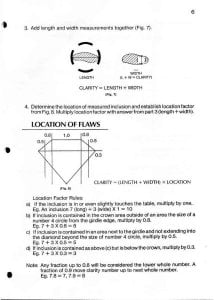
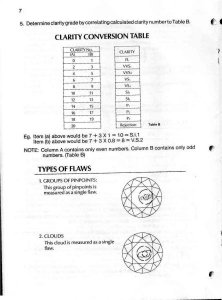
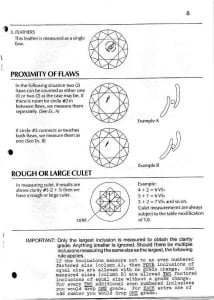
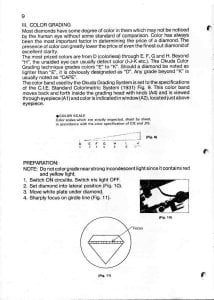
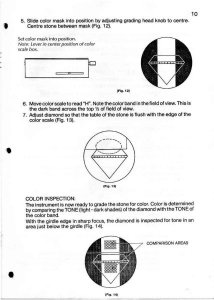
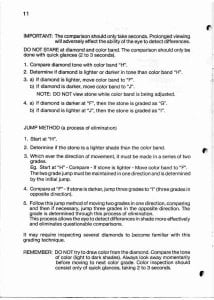
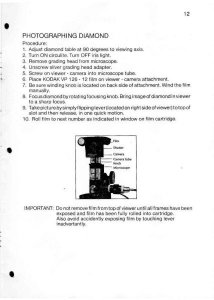

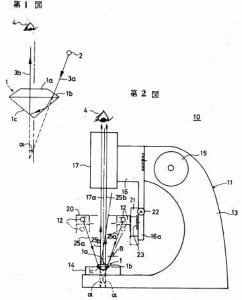

300x240.png)